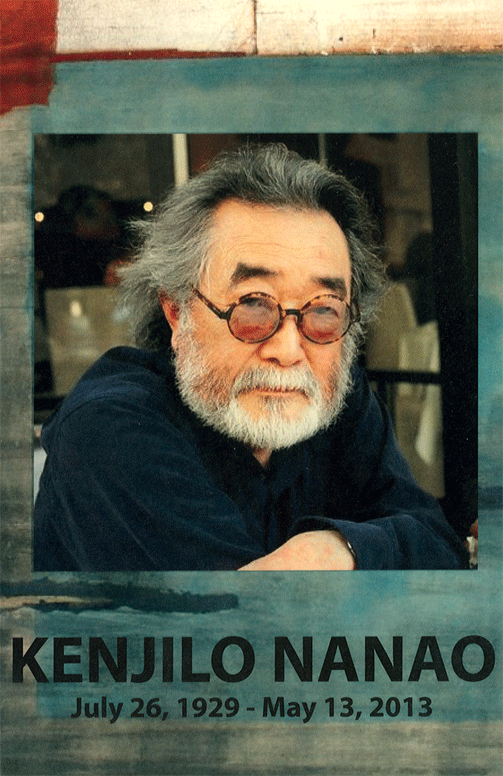 |
|||||||
|
|||||||
 |
|||||||
Kenjilo Nanao, whose serene, lyrical paintings assimilated the sensibilities of his native Japan and his adopted California through a long and distinguished career, died in Berkeley on May 13, at the age of 84, of a cerebral hemorrhage. Born July 26, 1929, in Aomori, in the far north of Honshu, over four hundred miles north of Tokyo — “the Oklahoma of Japan,” Nanao used to say — he arrived in San Francisco in 1960. He had wanted to study painting in France, but had trouble learning French. He became instead a Bay Area painter, influenced by the lyrical abstraction of Richard Diebenkorn and his own friend and teacher Nathan Oliveira. He became known first as a printmaker, his erotic and realistic imagery similar to that of his friend Mel Ramos, but the Japanese sensibility, and an intrinsic love of seascape and marine light, led him to the uniquely spiritual, meditative quality of his mature paintings. He was an influential and greatly loved teacher who contributed greatly to the growing reputation of California State University in Hayward, where he was considered a "consummate professional," Ramos says, adding "It was difficult to be an innovative Abstract Expressionist after the 1960s, but Kenji managed to dispel that myth by making wonderfully fresh paintings." An inveterate traveler, Nanao was particularly drawn to Venice, Turkey, and his native Honshu. His work drew on these travels, on the light and space they revealed to him, and on the paintings he was able to study at first hand by such favorites as Cezanne and Titian; but it also speaks of transience and objectiviity, resolving the vulnerability of human life in the contemplation of the immaterial. Nanao loved sweet things, colors, jokes, cooking, poker, and his family. His grandchildren adored him. He leaves, beside the fond memories of hundreds of students and friends and the beauty of his many prints and paintings, his devoted wife Gail, his son Max and daughter-in-law Chloe, and their children Zoe and Alexander. - Charles Shere |
|||||||
|
|